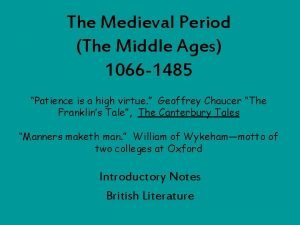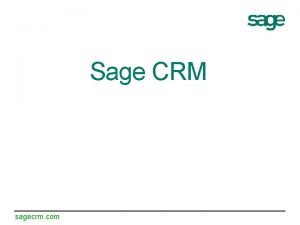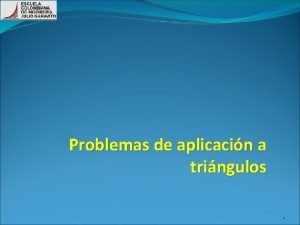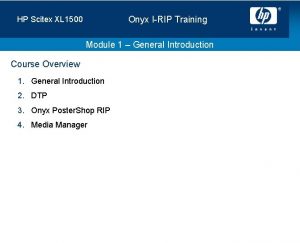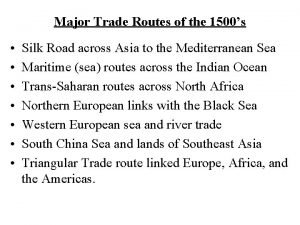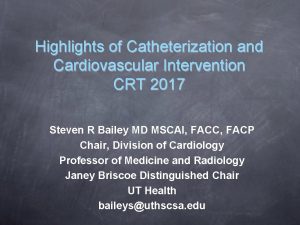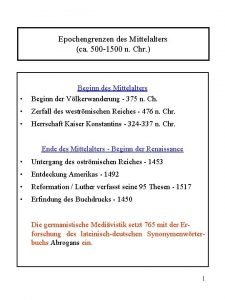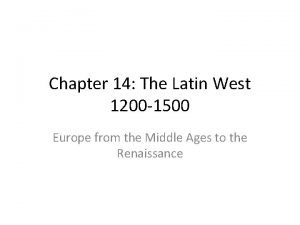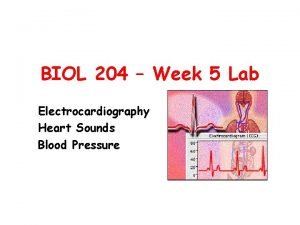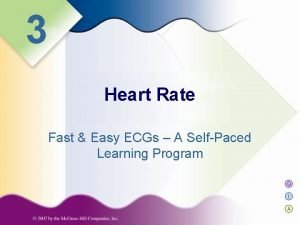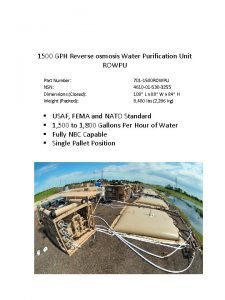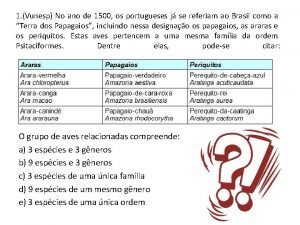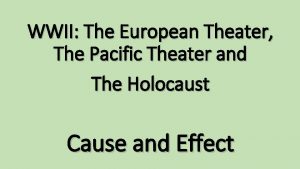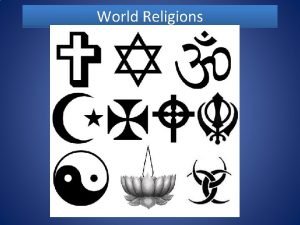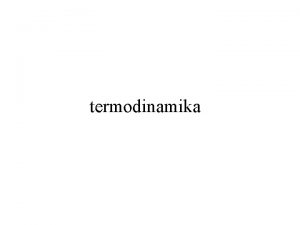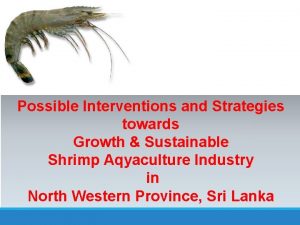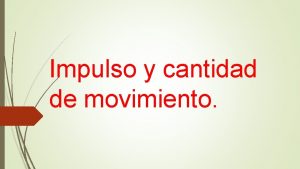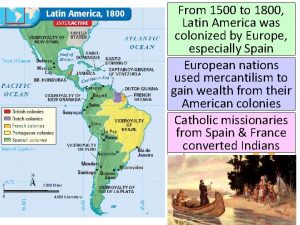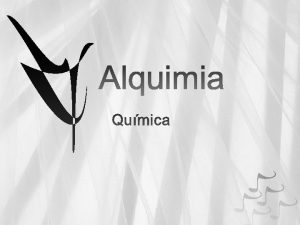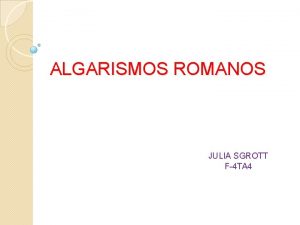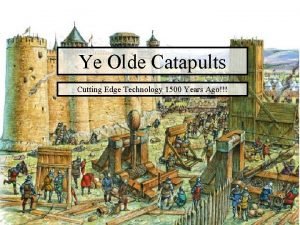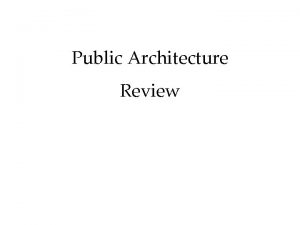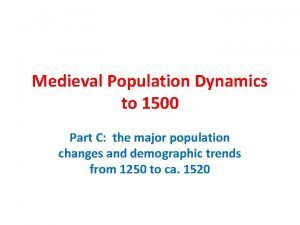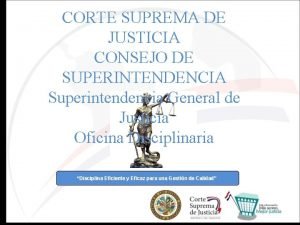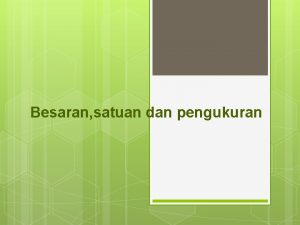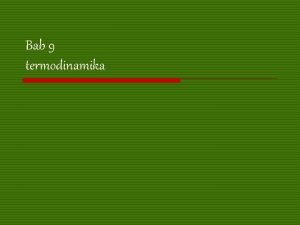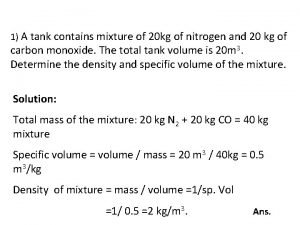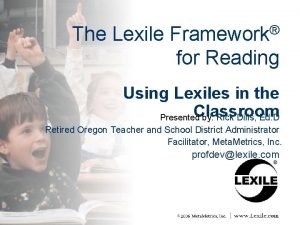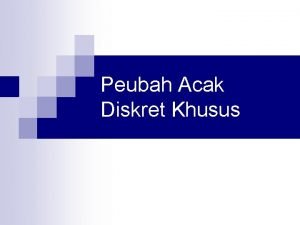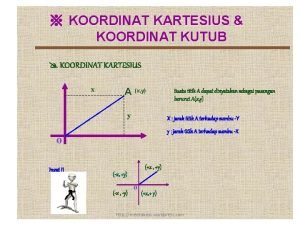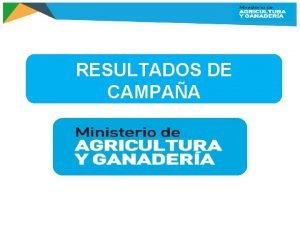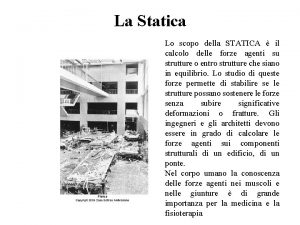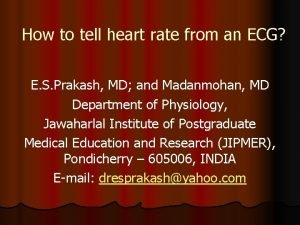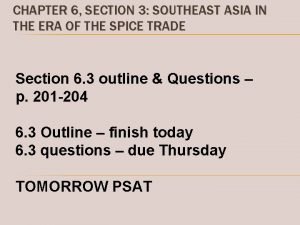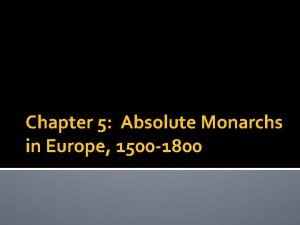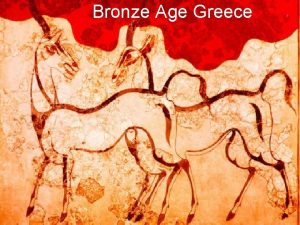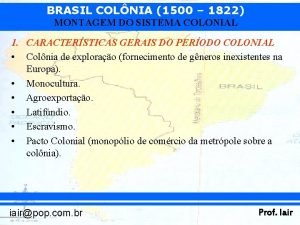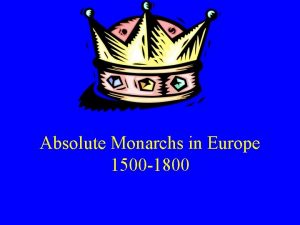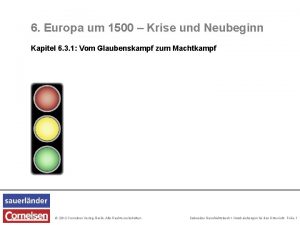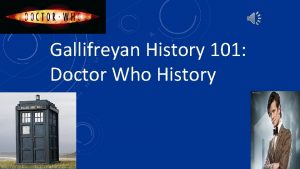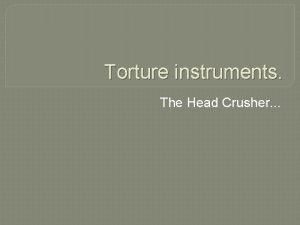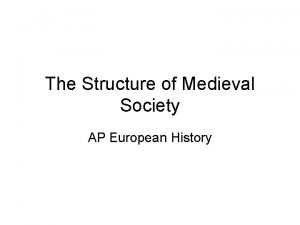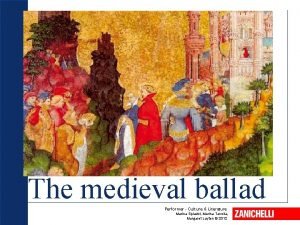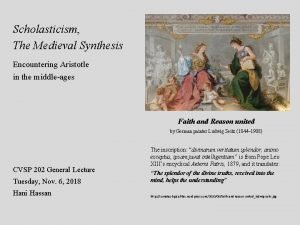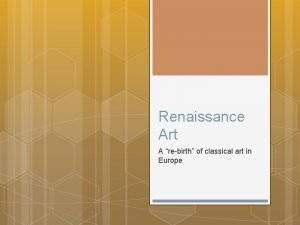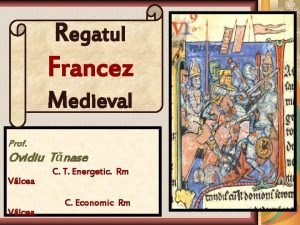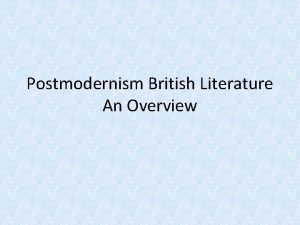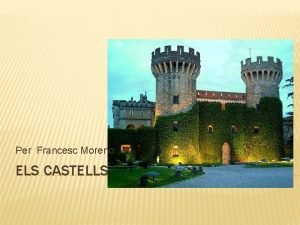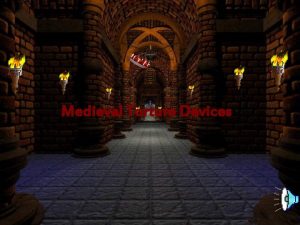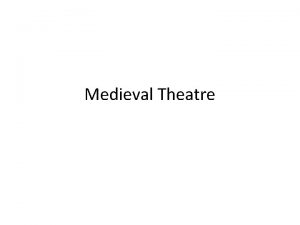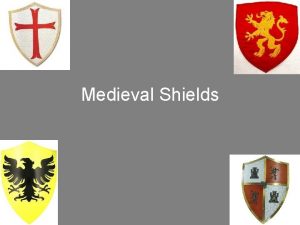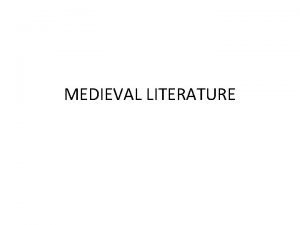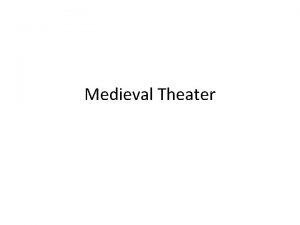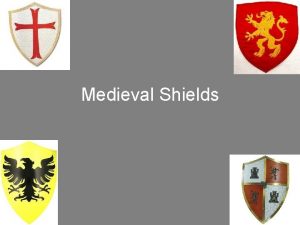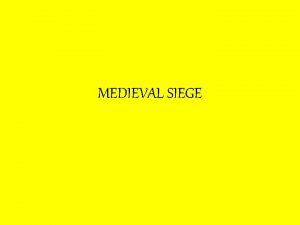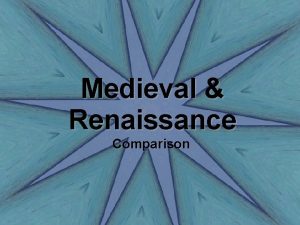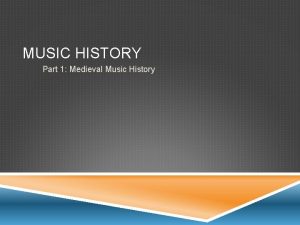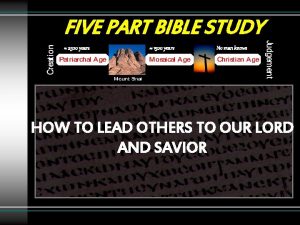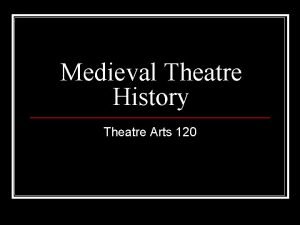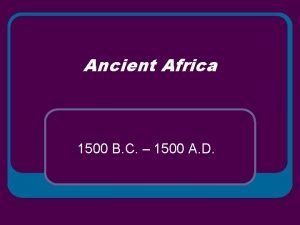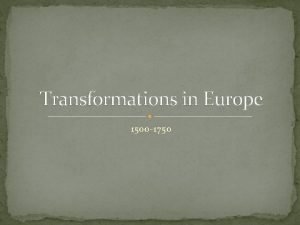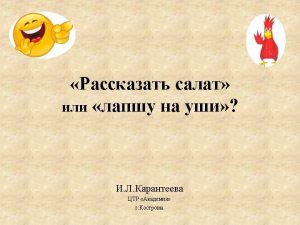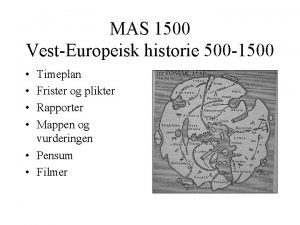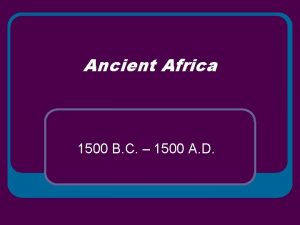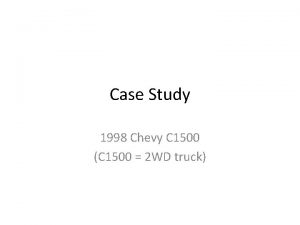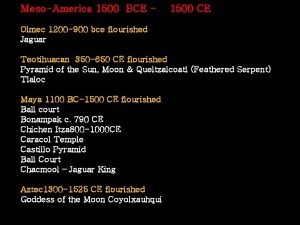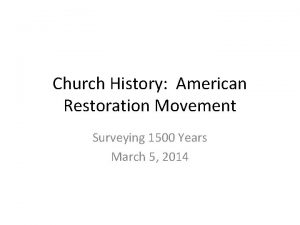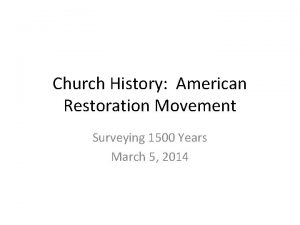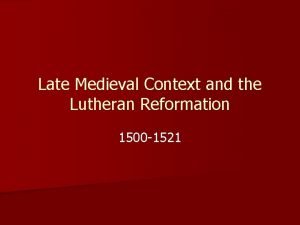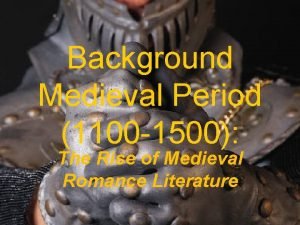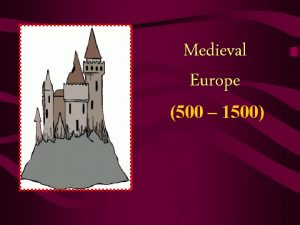Medieval History 101 Or 1500 years of history
































































- Slides: 64

Medieval History 101 Or: 1500 years of history in 90 minutes

Periodization • Always arbitrary • Always contested

‘Medieval’ • From the Latin ‘medium aevum’ • Literally ‘the Middle Age’ • So defined by Renaissance scholars who saw the medieval period as a middle period between Greece and Rome and their own age, which they hoped would be a return to the glory of Greece and Rome

Most Common Periodization • 0 -476: Late Antiquity • 476 -843: Early Middle Ages • 800 -1050: Central Middle Ages • 1050 -1300: High Middle Ages • 1300 -1492/1521: Late Middle Ages

Late Antiquity • The Roman Empire • United culturally/politically until 286 -337 CE • Parted and began to diverge culturally/linguisitcally etc 337 • Empire survived until: • West: 31 BCE - 476 CE • East 31 BCE - 1453 CE


Coming of Christianity • Entered Roman Empire as one of many Eastern mystery religions • Christians initially practiced in their homes • Experienced periodic persecutions until 313 CE • Officially adopted as religion of the Empire (both East and West) in 337

Early Christian Communities, 62 CE

Rapid Spread of Christianity after 313 CE • Popularity of Christianity exploded • Became fashionable to be Christian • By 337: 1/4 of Europe Christian • 391: Official Religion of Roman Empire • By 400: more Christians than non-Christians

Changing Nature of the Church after 313 CE • Structure of worship more rigid, development of liturgy • Theology less fluid • Grew wealthier • Architecture became more public • Hierarchy of church officials created • Institutionalization of church

Bishops • Chosen by communities to lead the church and resolve disputes about Christian teaching • After Constantine, bishops, who were often educated, would also act as administrators in the cities • As other wealthy Romans left the cities, Bishops took over the tasks of running them

Merging Cultures in the West The Roman, Germanic and Christian Heritage of Medieval Europe

The Roman Heritage o Trade networks (land sea) o Literacy o Classical learning in medicine, philosophy and literature o Administrative units o Beginnings of legal serfdom o Law o continuously in the East o rediscovered in 11 th c in West


The Germanic Heritage o Bonds of loyalty amongst lords and warriors o The beginnings of medieval feudal relationships o Beginnings of medieval manorialism o Dependents work the land for their lords who do not do agricultural work o Judicial system (until 1215) o Trial by compurgation o Trial by ordeal


The Christian Heritage • Monotheistic belief • Belief in the message of the gospels • charity, humility, poverty, kindness • Belief in everlasting life for the faithful • Anti-Semitism


Charlemagne’s Empire • Consolidation of Frankish territory under the Carolingians • Had been mayors of the palace but overthrew the Merovingian dynasty to become kings of the Franks in their own right

Rule of Charlemagne (r. 768 -814) • Ruled together with his brother Carloman until Carloman’s death in 771 • Worked tirelessly to expand his kingdom • Went on campaign every spring to annex territory • Numerous alliances through marriage (at least 11 wives and concubines) • 794 established permanent capital at Aachen • Established professional bureaucracy, missi dominici

Carolingian Renaissance • Renewal in education • For boys and girls • Church reform • Foundation of 22 cathedrals, hundreds of monasteries • Uniformity of ritual • Carolingian minuscule • • • Encouraged greater scholarship Preservation of Greek and Roman texts Easier to read

Merovingian Script

Carolingian Minuscule

Fragmentation of the Carolingian Empire • Collapse of the Carolingian Empire • Treaty of Verdun 843 • • • East Francia Lotharingia West Francia • Viking invasions, Magyar invasions, Muslim incursions • Three initial kingdoms were divided many times • Power of the kings was usurped by local powerful land holders

Division of Charlemagne’s Empire

Rivals for Power • In the years after 843, the kingdoms of East and West Francia and Lotharingia divided further • Nobles created alliances, married and fought to gain land (the currency of the day) and power


Second Conversion • Climatic warming • Results in food surplus • Results in job specialization and the rise of cities • Results in labour rather than subsistence economy • Results in increased leisure time • Results in second conversion


Outcomes of the Second Conversion • Health of one’s own soul as important as outward displays of religious faith • Sacraments seen as medicine for a sick soul • People’s relationship with God and Christ became much more personal

Outcomes of the Second Conversion • People begin to invest the papacy and the church hierarchy with authority • As a result the power of the church grows

Investiture Contest • Pope Gregory VII (1073 -1085) • Dictatus Papae (1075) • That the pope alone can instate bishops • That the pope has the power to depose emperors • That all princes shall kiss his feet • Synod of Rome (1075) • Denunciation of lay investiture


Investiture Contest • 1075 Henry IV of Germany appoints his own bishop of Milan • Gregory excommunicates Henry IV, Henry IV responds by deposing Gregory • Bishops refused to disobey Pope • German duces, released from feudal obligations issued ultimatum= obtain absolution from Pope • Canossa • reconciliation


Crusades • People’s Crusade 1097 • First Crusade 1096 -1099 • Second Crusade 1147 -1148 • Third Crusade 1189 -1192 • Fourth Crusade 1200 -1204



Results of the Crusade • Shared Eastern and Western cultures • Muslim science esp. medicine and travel technology • Return of Greek knowledge through Arabic manuscripts • Luxury goods trade • silk, spices, jewels • Awareness of otherness

Religious Fervor • Rise of new religious orders • • Franciscans (1209) Dominicans (1215) Beguins and beguines Mystics • All of which, in different ways, demonstrated a much more personal relationship with God

Giotto, Francis Receiving the Stigmata


The Twelfth-Century Renaissance • Development of a scientific method • Rise of scholastic inquiry • Major technological advances • Windmills, gunpowder, astrolabes, Arabic numerals, eyeglasses


Heresy • Two theories of heresy Church doctrine was solidified and this made it easier to decide who was a heretic and who was not OR With an increase in leisure time, people began to contemplate religious doctrine more and were more likely to conceive of heretical ideas

Heretical Movements of the Middle Ages • Waldensians • Advocated printing bibles in the vernacular • Preached without permission • Denied that priests were necessary to remit sins • Cathars • Believed in two gods a god of good and a god of evil • Believed the material world was evil • Denied the authority of Catholic clerics • Created their own mirror heirarchy

Responses to Heresy • Crusade • Albigensian Crusade (1209 -1229) • Inquisitions • 1184? -- Episcopal inquisitions established • Not at all efficient • • 1230 s-- papal inquisition Run by Dominicans Efficient at gathering and storing information Punishments, generally were light

The Calamitous Fourteenth Century • Famine • War • Plague

Famine • 1050 -1300: population explosion in Europe • European agriculture was supporting all the people it could • Post 1300: little ice age • Universal famine 1315 -1317 • Food prices rose exponentially • Disastrous results



The Hundred Years War 1337 -1453 • Occurs because England’s Edward III claims to be the heir of the throne of France • Battles across France with devastating results for peasantry • Result, in the end: England is beaten back to Calais


The Black Death • Traveled from the Gobi Desert to reach Italy in 1348 • Spread rapidly through Europe in the next two years • Europe lost between 1/3 and 1/2 of its population • Cities like Florence lost as much as 60% of their population


Consequences Decreased population • Labour shortage- higher wages paid, property prices drop • Standard of living improved for those who survived the plague • Higher wages, paid on the basis of supply and demand led to the beginnings of capitalism?

Intellectual Aftermath • Technological development • Fewer people meant people had to work more efficiently • Led to the development of machines that allowed work to be done more quickly • ie: printing press, guns, cannons • Medical inquiry • • • First quarantines (1277 - Ragusa) Somewhat effective use of quarantines during plague Re-evaluation of ancient theories of medicine, turning to more modern conceptions of the body

Intellectual Aftermath • Broke traditional ways of thinking • Destroyed the dominant mode of thinking about humanity’s relationship with the world • New modes of more secular/humanistic thought were allowed to break through the dominant narrative of Christian teaching-- leads to Renaissance/Reformation

The End of the Middle Ages • Declining papal authority • Papal Schism (1309 -1378 s) • Increased interest in understanding the natural world empirically rather than theologically • William Occam, Occam’s Razor • Exploration • (re)Discovery of the new world


Map of the World 1474

Map of the World 1520

The End of the Middle Ages • Increased literacy • Invention of the printing press ca. 1440 • Divergent religious beliefs • Protestant Reformation 1518 -1521

 Goat years to human years
Goat years to human years 300 solar years to lunar years
300 solar years to lunar years Four score and seven years ago is how many years
Four score and seven years ago is how many years Medieval theatre timeline
Medieval theatre timeline Medieval period 1066 to 1485
Medieval period 1066 to 1485 1500-1269
1500-1269 Un helicoptero que vuela a una altura de 1500 m
Un helicoptero que vuela a una altura de 1500 m Hp scitex xl 1500
Hp scitex xl 1500 Pix
Pix 1500s trade routes
1500s trade routes 1500-1382
1500-1382 1500 n chr
1500 n chr 1500 life expectancy
1500 life expectancy Renaissance europe 1500 map
Renaissance europe 1500 map 1500 method ecg
1500 method ecg Medieval theme
Medieval theme 300 method ecg
300 method ecg Rowpu water purification system
Rowpu water purification system Se reunirmos as famílias canidae cães ursidae
Se reunirmos as famílias canidae cães ursidae Wwii
Wwii Where is hinduism located today
Where is hinduism located today Cp-cv=r/m
Cp-cv=r/m 1500-1246
1500-1246 704-631-1500
704-631-1500 Un cañon de 1500 kg montado sobre ruedas
Un cañon de 1500 kg montado sobre ruedas Latin america 1500 to 1800
Latin america 1500 to 1800 America africa and europe before 1500
America africa and europe before 1500 Adva modem
Adva modem Alquimia. (300 antes de c a 1500 después de c).
Alquimia. (300 antes de c a 1500 después de c). 4 em algarismo romano
4 em algarismo romano 1500 ye
1500 ye Bce public
Bce public Cisco ssl appliance 1500
Cisco ssl appliance 1500 Florence population 1500
Florence population 1500 1500-1379
1500-1379 Konversikan 450 gram ke dalam satuan internasionalnya
Konversikan 450 gram ke dalam satuan internasionalnya Suatu sistem menyerap kalor 1500 kalori dari lingkungannya
Suatu sistem menyerap kalor 1500 kalori dari lingkungannya A lunar excursion module weighs 1500 kg
A lunar excursion module weighs 1500 kg Lexile scale
Lexile scale Mesin sepeda motor mampu memberikan gaya 1500 n
Mesin sepeda motor mampu memberikan gaya 1500 n Koordinat cartesius dari titik a (4, 240o) adalah ....
Koordinat cartesius dari titik a (4, 240o) adalah .... Erf form
Erf form 2000000/1500
2000000/1500 F
F 1500/rr interval
1500/rr interval North america, family histories, 1500-2000
North america, family histories, 1500-2000 In 1500 mainland southeast asia was a relatively
In 1500 mainland southeast asia was a relatively 5 monarchs of europe
5 monarchs of europe Mycenaean chronology
Mycenaean chronology Divisão do brasil colonial
Divisão do brasil colonial Absolute monarchs in europe 1500-1800
Absolute monarchs in europe 1500-1800 Europa um 1500
Europa um 1500 Gallifreyan history
Gallifreyan history Head crusher medieval
Head crusher medieval Structure of medieval society
Structure of medieval society Performer culture and literature 3
Performer culture and literature 3 Siege engines
Siege engines The medieval synthesis
The medieval synthesis Medieval and renaissance differences
Medieval and renaissance differences Centralizarea frantei
Centralizarea frantei British literary movements
British literary movements Parts d'un castell medieval
Parts d'un castell medieval Iron spider torture device
Iron spider torture device Characteristic of medieval theater
Characteristic of medieval theater Medieval shields designs
Medieval shields designs




